Key takeaways
- Understanding your audience and setting clear objectives are essential for effective Facebook Ads campaigns.
- Monitoring key metrics like impressions, click-through rate, and cost per result helps optimize ad performance and spending efficiency.
- Embrace A/B testing and budget pacing to refine ad strategies and maximize returns without overspending.
- Future trends in Facebook advertising include greater reliance on AI, immersive ad formats, and the need for innovation in data collection amidst privacy changes.
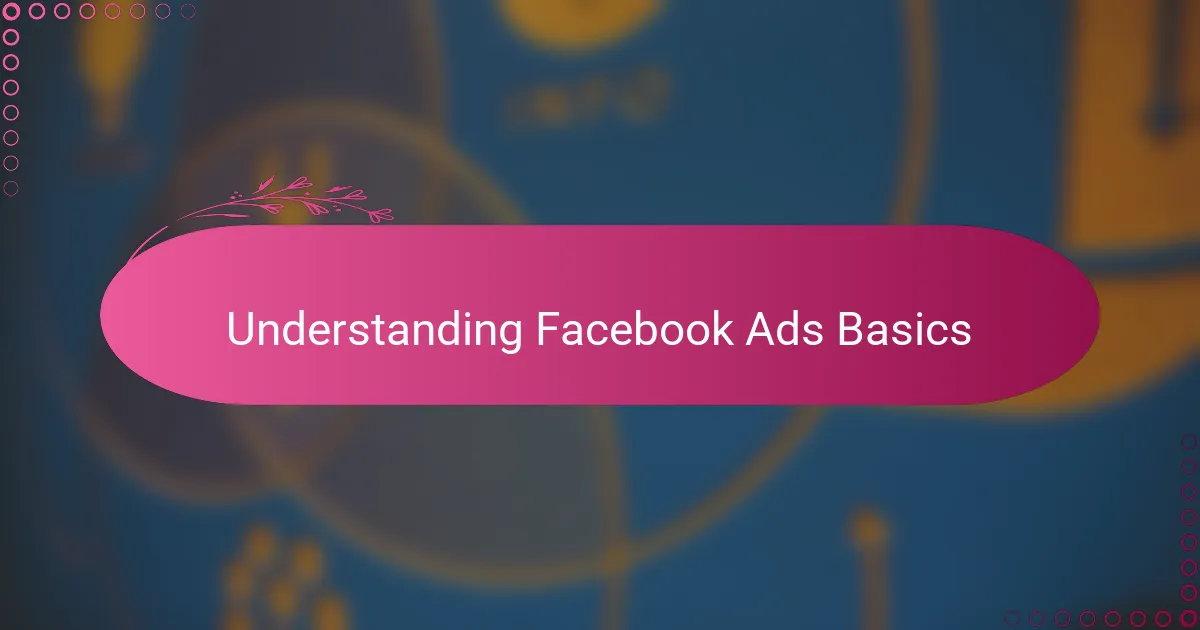
Understanding Facebook Ads Basics
When I first started with Facebook Ads, I quickly realized that understanding the basics was a game changer. It’s not just about throwing money at a campaign; it’s about knowing who you want to reach and what action you want them to take. Have you ever wondered why some ads feel so relevant while others just get ignored? That comes down to setting clear objectives and knowing your audience inside out.
One thing I’ve learned is that Facebook’s ad platform is built around targeting options that let you zoom in on your ideal customer. From age and location to interests and behaviors, the data available can feel overwhelming, but it’s your secret weapon. When I began to experiment with these options, the results became more predictable and, honestly, more exciting to track.
Ad creatives and formats are another basic yet crucial part. Is your image or video capturing attention in the first few seconds? I used to underestimate this, thinking the targeting would do all the work. But trust me, the creative is your hook, your first impression—and getting this right has made all the difference in the performance I’ve seen.
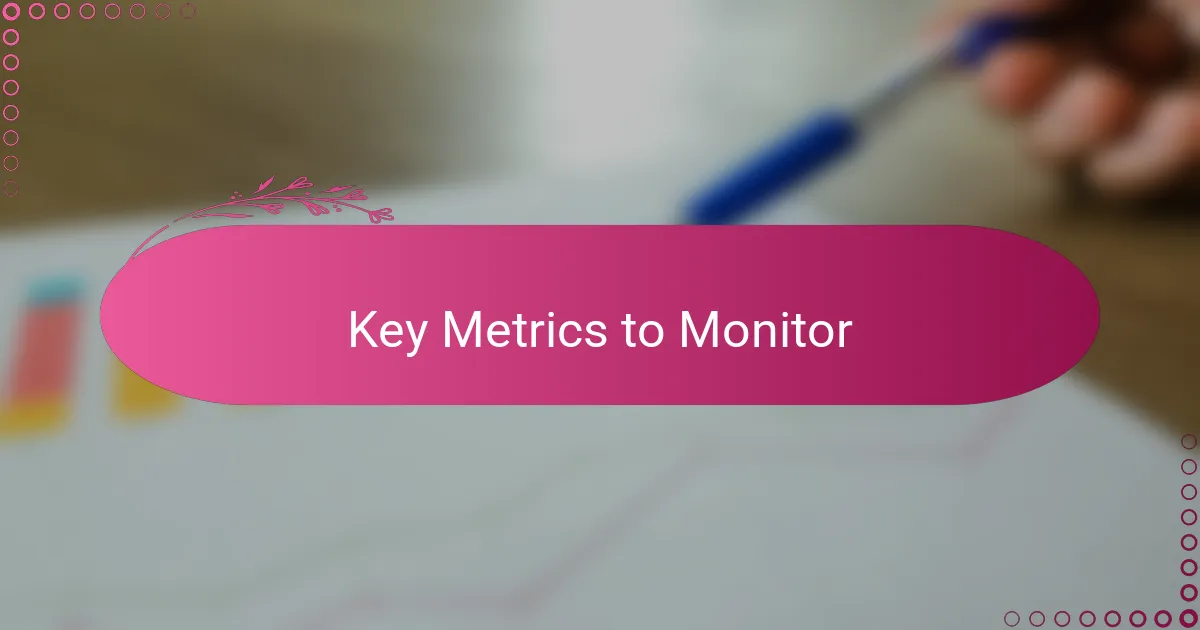
Key Metrics to Monitor
When I dive into Facebook Ads, the first metrics I check are impressions and reach. These numbers tell me how many eyes actually saw my ad, which feels like the heartbeat of the campaign. Without enough reach, even the best creative falls flat, and I’ve found that small tweaks in targeting can suddenly boost these figures in surprising ways.
Click-through rate (CTR) is another metric I obsess over. It answers the question: are people curious enough to take that next step? I remember a campaign where the CTR was disappointingly low, and it hit me that maybe my headline wasn’t speaking directly to the audience’s problem. Once I adjusted the copy to be more conversational, people started clicking, and everything shifted.
Cost per result is the reality check that keeps me grounded. It shows whether I’m spending efficiently or just burning budget without returns. I’ve seen campaigns with brilliant engagement but sky-high costs, and that’s the moment I pause, reassess, and refocus on what truly matters—getting valuable actions without breaking the bank.
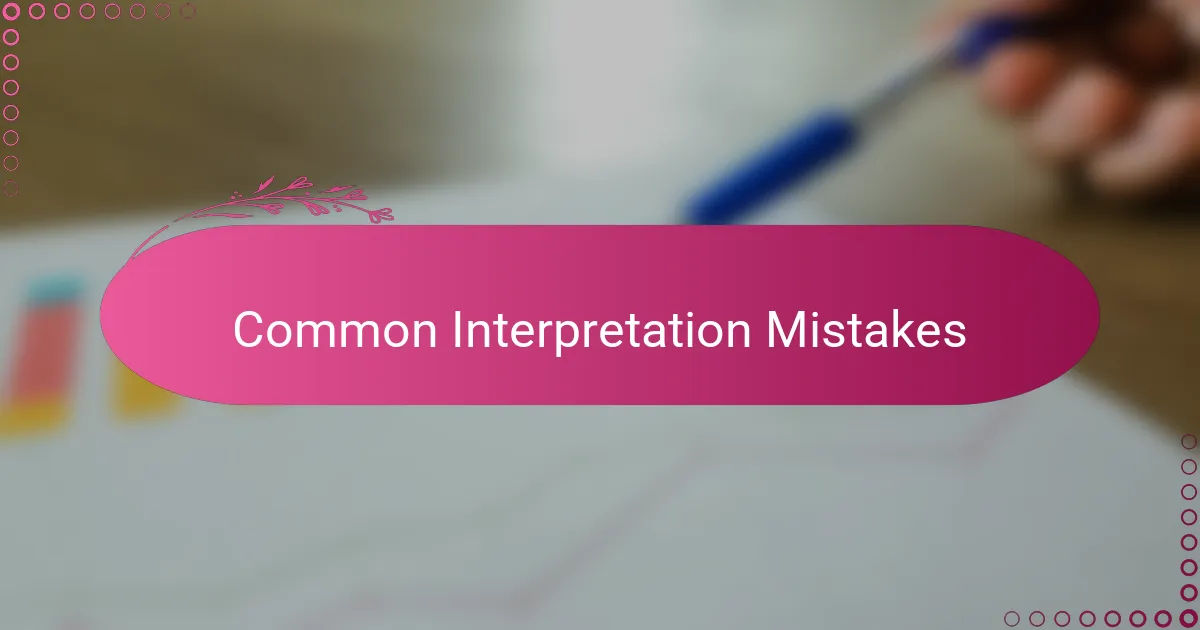
Common Interpretation Mistakes
One common mistake I often see—and have made myself—is jumping to conclusions based on early results. Have you ever paused a campaign just because the initial CTR looked low? I learned that sometimes ads need time to optimize, and pulling the plug too soon can mean missing out on valuable performance gains.
Another trap is focusing too much on vanity metrics like impressions without digging deeper. Sure, a high number makes you feel good, but does it translate into meaningful actions? I remember tracking thousands of impressions but realizing later that hardly anyone clicked or converted—it was a tough wake-up call.
Finally, I’ve caught myself not considering the context behind numbers. For example, comparing cost per result across vastly different campaigns without accounting for goals or audience differences can be misleading. Have you noticed how sometimes a higher cost per acquisition actually reflects a more valuable customer? Understanding these nuances has saved me from misinterpreting what the data truly means.
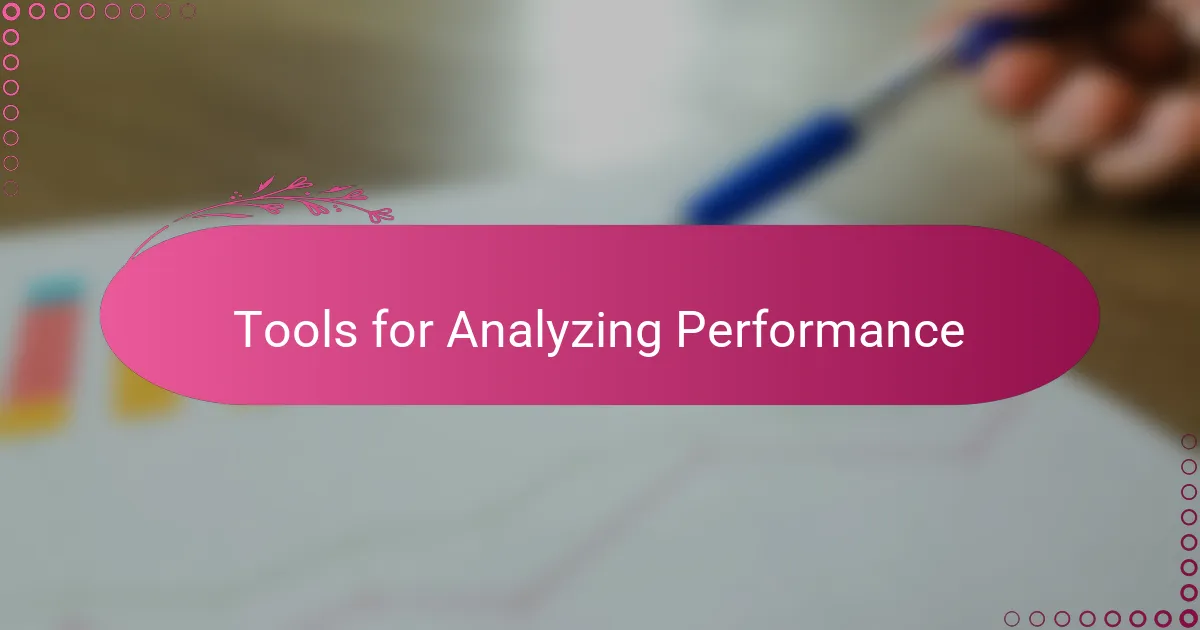
Tools for Analyzing Performance
When I first started diving into performance analysis, I quickly realized that relying solely on Facebook’s native Ads Manager wasn’t enough. Have you ever felt overwhelmed by the sheer volume of data it throws at you? That’s why I found third-party tools like Hootsuite Ads and AdEspresso invaluable—they break down complex metrics into digestible insights that actually guide decision-making.
One tool I keep coming back to is Facebook Analytics itself. It’s built to give you a bird’s-eye view of your campaigns, but what I appreciate most is how it connects user actions across devices and touchpoints. This helped me see beyond simple click numbers and understand customer journeys, which suddenly made performance analysis feel less like guesswork and more like storytelling.
Of course, no tool is perfect. Sometimes the dashboards can feel like a flood of numbers without a clear path forward. That’s why I like to combine these platforms with manual tracking and real-time feedback from my team. It’s that blend of tech and personal insight that has really transformed how I interpret and act on Facebook Ads data.
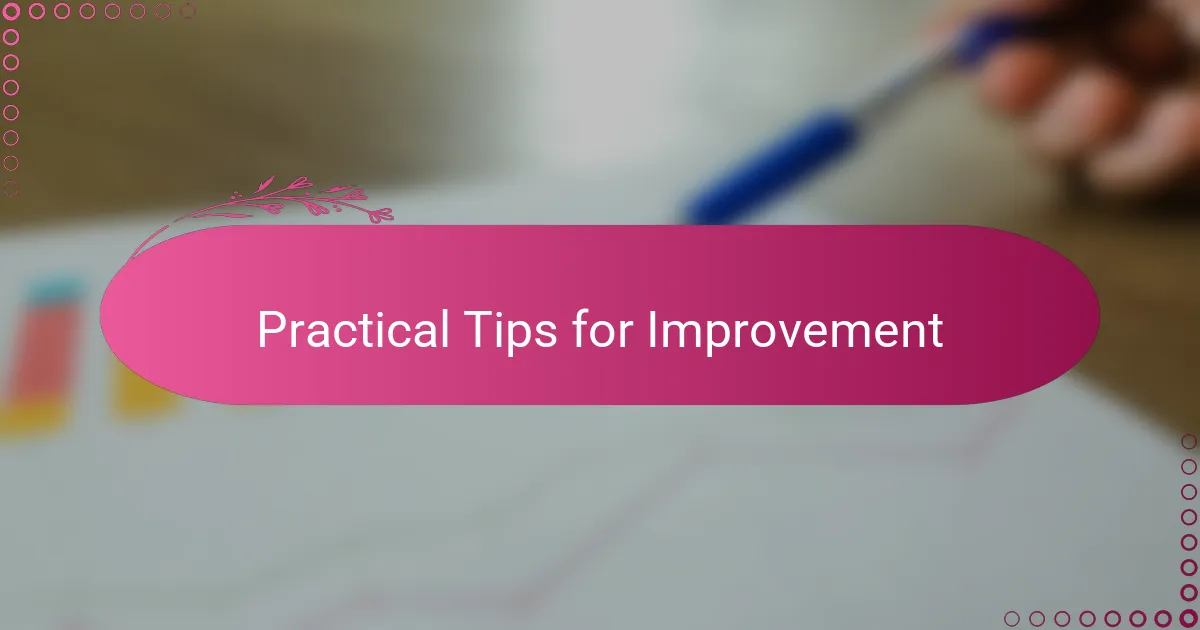
Practical Tips for Improvement
One practical tip I always come back to is testing relentlessly. Have you ever felt stuck with just one version of an ad? I used to hesitate before experimenting, fearing wasted budget, but once I embraced A/B testing—trying different images, headlines, or audiences—the improvements were undeniable. Small tweaks often lead to big wins.
Another thing I focus on is pacing my budget wisely. Early on, I spent heavily right away, hoping for quick results, and ended up burning through funds before learning what worked. Now, I start slow and increase spend on ads that show promise. This approach feels less risky and helps me make smarter decisions without the stress.
Lastly, I can’t stress enough the importance of frequent review. How often do you really check your campaigns? Weekly check-ins have saved me from letting underperforming ads run too long. It’s about staying curious, asking, “What’s working? What isn’t?” and acting quickly to keep performance on track.
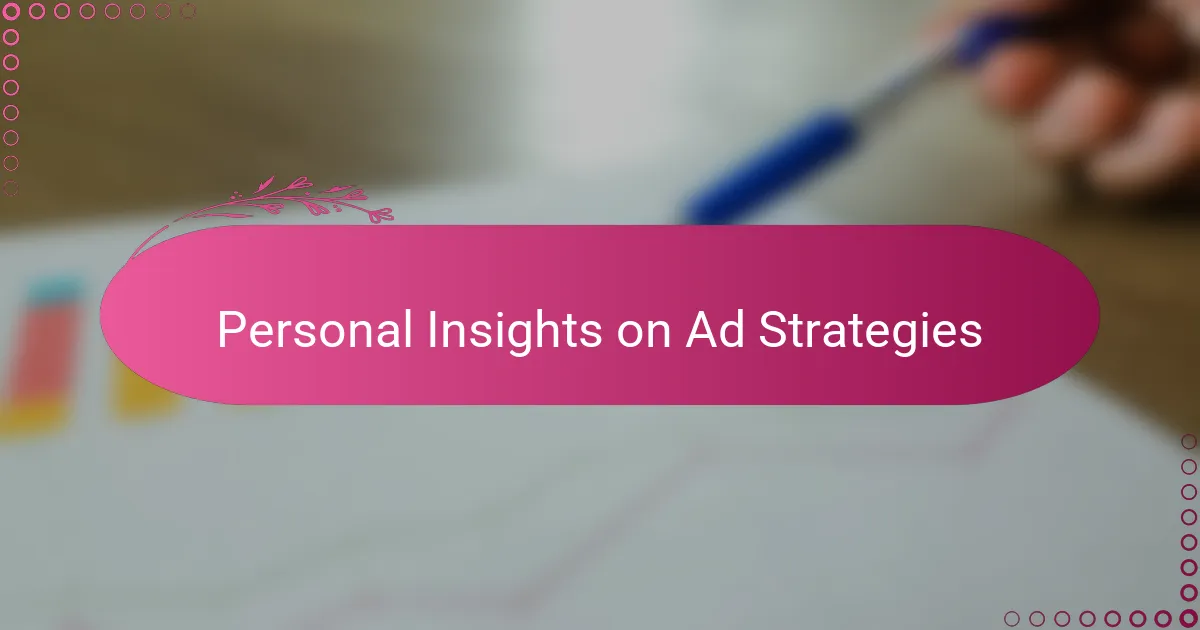
Personal Insights on Ad Strategies
Sometimes, I find that the best ad strategies emerge when you break away from conventional wisdom and trust your gut a little. Have you ever launched a campaign that didn’t tick all the textbook boxes, yet somehow resonated deeply with your audience? That happened to me, and it reminded me that creativity and intuition play a huge role alongside data.
It’s tempting to focus only on what the numbers say, but from my experience, adapting your strategy based on real-time feedback from your audience can be a game changer. I recall a campaign where tweaking our messaging tone to be more casual sparked noticeably better engagement—proof that sometimes, small shifts in strategy unlock bigger wins.
Of course, not every experiment pans out, and that’s okay. Learning to embrace those “failures” as essential steps toward finding what truly works has shaped how I approach every new campaign. After all, wouldn’t you agree that the best strategies are the ones continuously refined through trial, error, and a bit of intuition?
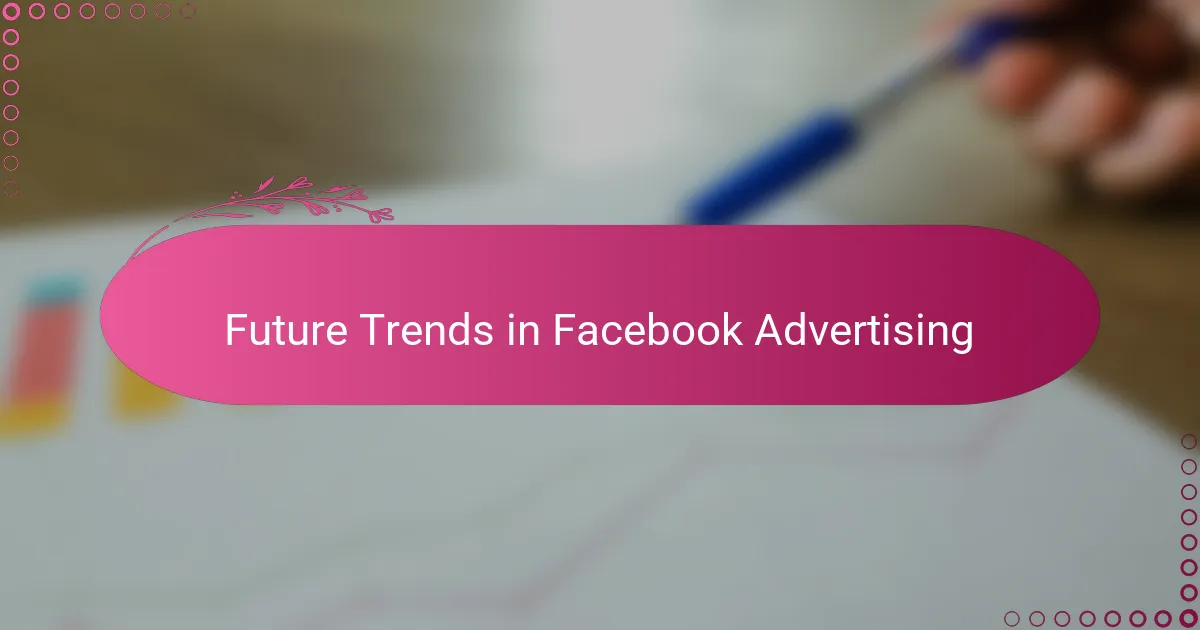
Future Trends in Facebook Advertising
Looking ahead, I believe Facebook Advertising will lean heavily into artificial intelligence and machine learning. Have you noticed how smarter algorithms already optimize ad delivery in real time? I think this trend will only deepen, letting advertisers rely more on automated insights while focusing on creative storytelling.
Another shift I’m watching is the rise of immersive formats like augmented reality ads. It surprised me how these interactive experiences can pull people in far more than static images. From my experience, ads that engage users actively create a memorable connection, and I suspect this will become a key differentiator soon.
Privacy changes also have me curious about the future. How will Facebook balance user data protection with advertisers’ need for detailed targeting? I’ve felt the pinch of tighter restrictions firsthand, but it’s also forced me to rethink strategies—getting creative about first-party data collection and building trust with audiences. This challenge feels like a call to innovate rather than a setback.